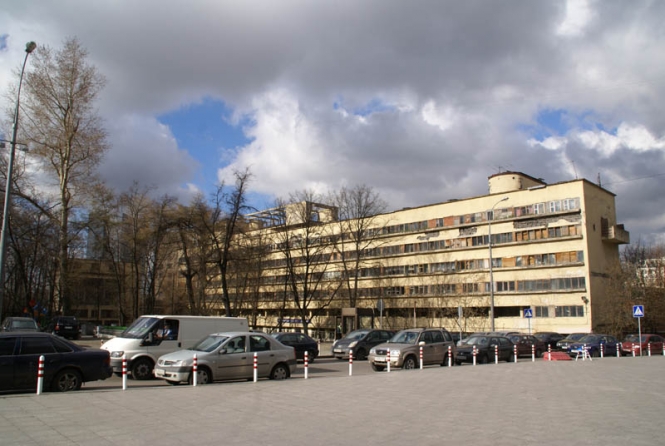The Narkomfin Building in Moscow to Be Restored by 2019

It was planned to complete the restoration of the Narkomfin Building by 2019. The facades will be restored on the basis of contemporary historical buildings, reports mos.ru portal.
In 2015-2016, the project for the restoration of the architectural monument was developed, based on comprehensive scientific research. Alexey Ginzburg, the grandson of the architect Moisey Ginzburg, was invited as the chief architect of the project. The project began in July 2017.
All recent superstructures and extensions to the historical building are currently being now. In particular, the project provides for the dismantling of the overbuilt attic floor and utility wings of the engineering facility.
Part of the first residential floor, conceived by the authors as a free space with a grid of supporting pillars, will be freed from the later annexes. Thanks to this, the Narkomfin Building will regain one of its main features: the style of a ship. The historical layout of the ground floor will be restored, including the gallery, the hall, and the staircase. A large open recreational space will appear again, including the free part of the first floor.
Among the elements to be restored are the stained-glass window of the communal building, the original pits with lanterns designed to illuminate the basements of the residential and communal buildings, the original flower beds of the residential building, the window and door units, the engineering communications, the spiral staircase on the roof, the balconies and roofs.
On the western facade of the residential building, on the site of the dismantled late extension (the shaft of the passenger elevator) there will be an innovative non-combustible elevator shaft stylized as a boiler pipe along the entire height of the building.
The bearing reinforced concrete frame of the building will remain unchanged. It will be restored in accordance with the design solutions.
It is planned to restore the characteristic pattern of engineering communications inside walls and ceilings, as well as the waterproofing system and the greening. The surviving historical buildings will help to recreate the original contents of the internal environment of the house: retro radiators, kitchen facilities, plumbing fixtures, wiring accessories, lighting fixtures, windows and door fittings.
The historical layout of the communal building will also be restored: two-room spaces of halls illuminated by a glass wall-screen, the grid of supporting pillars, the historical staircase that unites all the floors of the building with the street through a covered passage leading to the residential building. In the basement of the communal building there will be a lift with access to each floor and the restrooms.
After the restoration, the building will regain its the historical function laid down by the authors of the project. The residential cells, apartments on the seventh and eighth floors and dormitory rooms of the residential building are planned to be used for permanent and temporary accommodation. The basement will house engineering, utility rooms and storage areas. Each apartment might have its storage cubicles there.
A part of the lobby and the main staircase will be used as a museum.
Roofs of the residential and communal buildings conceived as a solarium and a recreational area, will again be used as public observation platforms. They will be also used as venues for various events.
The communal building that served as a canteen until the end of the 1930s, will again become a public catering area. In the elevated part of the building there will be rooms for visitors, and the basement will house the staff-only and utility premises of the café.
The area surrounding the Narkomfin Building will be landscaped. There will be a walking area with a net of footpaths, views and an original landscaping pattern.
- Tags:
- restorations



